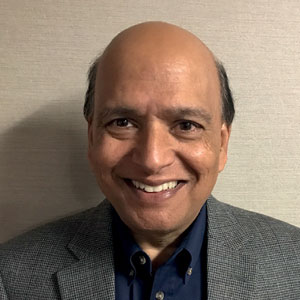THANK YOU FOR SUBSCRIBING

The Federal Government is Open for Innovation
Jarah Meador, Director of Open Innovation, Technology Transformation Services


Jarah Meador, Director of Open Innovation, Technology Transformation Services
One evening a decade ago, I was working in the lab in a radiation research center and received a phone call that changed my life. The caller was a parent of a young boy who had received an accidental elevated dose of radiation during a chest x-ray. She was terrified about the potential long-term impacts on his health. Was he at a higher risk for cancer? What signs should she look for? She had questions about the research findings, the data, and the science. She called the authors of important publications in this field but no one would answer her questions. I was next on her list. I hesitated - I wasn’t a clinician, I was a basic researcher who published findings in journals. Nervously, I agreed to talk and we spent hours together deciphering the data. I ended that call with the profound understanding that scientific research wasn’t as open where it could help the most people. That call led me to leave academia, determined to support open forms of discovery, collaboration, and innovation.
My search led me to my dream role in federal service at the U.S. General Services Administration (GSA) where I lead an open innovation portfolio in the Office of Technology Transformation Services (TTS). The diverse set of digital programs and products at TTS focus on transparency, open sharing, accessibility, and an improved customer experience for our customers, including the American people. Programs like Data.gov, Code.gov, and Regulations.gov support open government and transparency. USAGov is the nation’s front door for finding and understanding government services and information. And the U.S. web design system and Digital.gov provide digital government tools and expertise for the people and by the people.
With these programs as examples, it’s clear that the federal government is open for innovation. The programs I lead, Challenge.Gov and CitizenScience.Gov, are central hubs for the federal government’s use of crowdsourcing, citizen science, and prize competitions. Through this work, agencies and the public engage directly in discovery, problem solving, and innovation. By opening the innovation process to the public, incorporating best practices such as hiding submitters’ identity from the reviewers, and not incorporating past performance into the evaluation criteria, we reduce bias in participation and allow the voices of the underserved and underrepresented to be heard.
The fifth U.S. Open Government National Action Plan calls for greater public participation in science and 2023 has been designated the ‘Year of Open Science’ by the White House Office of Science and Technology Policy. This signals the growing support and interest in promoting open and equitable research practices in science and broadening public participation. Active public engagement in research can improve outcomes and build societal trust in science. For example, in citizen science, the public participates voluntarily in the scientific process to address real-world problems in ways that may include formulating research questions, conducting experiments, collecting data, and making new discoveries. Agencies like NASA, NOAA, EPA, and others are using forms of community science and participatory research to create meaningful scientific collaborations with the public. Over 500 projects are listed in the catalog on CitizenScience.Gov on topics that include water quality in the Chesapeake Bay, Earth observations, Monarch butterfly migration, and extreme heat measurements in urban environments.
To remain secure and to represent the best interests of the American people, the government must take an all hands approach to innovation. For centuries, governments have used prize competitions as a fair and open approach for broad participation in the innovation process. Autonomous vehicles, navigation at sea, food preservation, trans-Atlantic flight, oil spill clean-up, and the design for the U.S. Capitol Building all resulted from prize competitions intended to advance innovation. The 2010 reauthorization of the America COMPETES Act gave every federal agency authority to conduct prize competitions to incentivize innovation. Since then, over 100 agencies have run more than 1,800 prize competitions on Challenge.Gov and have awarded well over $500M in prizes.
Agencies are using prize competitions to source new ideas, technologies, designs, algorithms, software, and scientific discoveries and are seeing three primary benefits: 1) participation from leading edge companies that do not typically work with the government, 2) partnerships are the norm, and 3) you pay for success. Additionally, participants frequently get to keep the intellectual property rights in what they create for the competition (with agencies having the option to license those rights), creating a strong incentive for public innovation. Prize competitions are creating new avenues for working with solvers and are encouraging innovation to come from anywhere.
Through this work, agencies and the public engage directly in discovery, problem solving, and innovation
It might surprise you to learn that Challenge.Gov - the government’s prize hub - is part of the Federal Acquisition Service of GSA. The Federal Acquisition Service is dedicated to procuring goods and services for the government. Transformational innovation can’t always be sourced using traditional methods. More and more agencies are using prize competitions to prototype with companies that are not currently working with the government. This work is helping to build trust, refine requirements, and create a bridge for better collaboration between the government and American innovators. Programs like Army’s xTech and The Opportunity Project at Census are using prize competitions to accelerate technology solutions and to serve as an onramp for follow-on activities, collaboration, and funding.
From that day of talking to a frightened parent in the lab, I’m proud to see all the ways the federal government is opening the doors to scientific discovery and innovation and excited to be a part of an innovative ecosystem engaging with the American public to solve problems.
Weekly Brief
I agree We use cookies on this website to enhance your user experience. By clicking any link on this page you are giving your consent for us to set cookies. More info
Read Also













